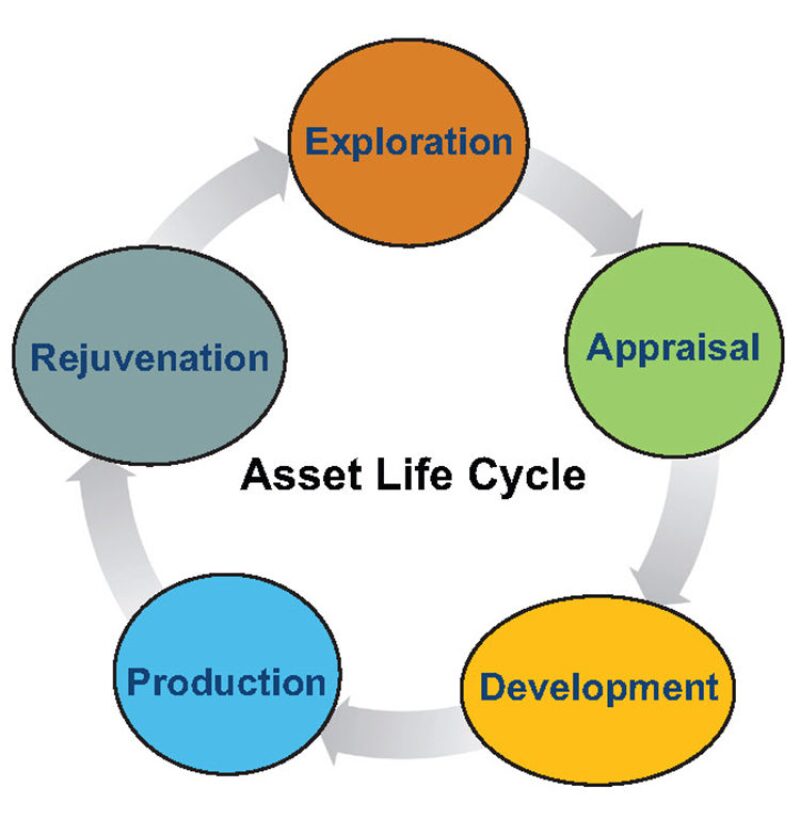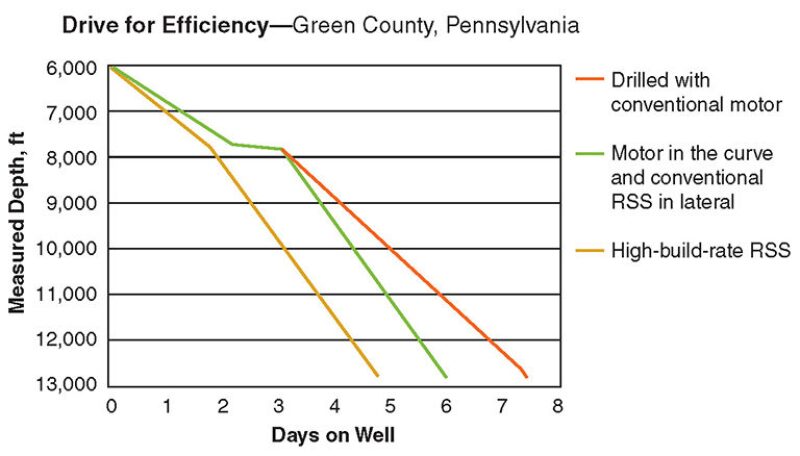Europe and Australia have joined the US in expanding recoverable hydrocarbons from unconventional resources, and initial activities are on the rise elsewhere. However, not all wells are producing commercially, and not all hydraulic-fracture stages contribute within the producing wells, suggesting that it is important to target the field’s sweet spots when dealing with shale resources. Therefore, unconventional-resource development based on the current concepts of geometric placement of hydraulic-fracture stages may not be appropriate.
Introduction
Although significant advancements in technology for the development of shale gas/oil plays in North America (particularly in the US) have been made in recent years, a number of these shale wells still experience relatively low initial productivity. There are two possible reasons for this: Fracture placement does not intersect the natural fractures in the well, and reservoir quality [i.e., total-organic-carbon (TOC) levels, thermal maturity, and remaining hydrocarbon in the source-rock reservoir] is low or nonexistent at the locations where fracture stages have been placed.
Many US operators do not invest in methods of reservoir characterization along the horizontal lateral to assess reservoir quality (i.e., no logs run, drilling cuttings not analyzed, and advanced mud logging with addition of gas chromatography not used). However, international operators in China, Latin America, Saudi Arabia, and India, who are just beginning to explore and exploit shale reservoirs, are eager to consider new technologies that have been shown to reduce cost or increase recovery.
Well-by-well production data indicate that shale formations have small spots of very productive wells—sweet spots—surrounded by large areas of wells that produce far less gas/oil. Sweet spots are a function of TOC, thermal maturity, thickness, natural fractures, mineralogy, and geomechanical stresses in the area. The first step in identifying sweet spots is from information collected during a basin screening study. It is recommended that such studies be conducted in a new basin or in a different part of a basin than that being developed currently.
To begin initial characterization of the reservoir, it is recommended that 3D seismic be conducted over the potential play area. Data from exploration and appraisal wells are used to pinpoint the location of sweet spots through further formation assessment consisting of detailed mineralogical, structural, and geomechanical characterization (pulsed neutron spectroscopy, nuclear magnetic resonance, and acoustic logs). These data are more location-specific, while information gathered through seismic is broad, spread out, and not as accurate as that obtained from an actual wellbore penetrating the formation.
Optimizing Well Placement and Hydraulic Fracturing

Asset Life Cycle. The Asset Life Cycle is the platform adopted by the company as the suggested method for operators to use when analyzing, developing, and producing unconventional shale gas/oil reservoirs. The Asset Life Cycle (Fig. 1) includes five phases: Exploration, Appraisal, Development, Production, and Rejuvenation. Most of these terms have been used in the industry for a number of years. What is new, however, are the technologies and solutions that are employed and the operator objectives to be accomplished during each phase (see the complete paper for a full discussion of these objectives).
Optimized Formation Evaluation and Reservoir Characterization. The mineralogical characterization and TOC quantifications mainly rely on a pulsed neutron spectroscopy and nuclear-magnetic-resonance logs. The processing of capture and inelastic gamma ray spectra obtained from the pulsed neutron tool can quantify the formation’s basic elemental composition, including silicon, calcium, aluminum, iron, sulfur, magnesium, and carbon. Geomechanical characterization is based on acoustic- and density-log responses. Variation in the reservoir mineralogy and TOC content affects the rock-mechanics properties. Stress-vs.-strain curves can be derived from micromechanical models of the rock that enable correlations between dynamic (obtained from acoustic logs) and static elastic properties (obtained from triaxial-compression testing on core samples). Additionally, the azimuthal and transverse shear-wave anisotropies can be processed from a cross-dipole acoustic log to characterize the vertical and horizontal rock stiffness.
This shale-gas-facies expert system provides operators with a quick and accurate method of classifying shale-gas reservoirs, identifying favorable zones for hydraulic fracturing, identifying fracture barriers, and locating zones from which to drill horizontal laterals. The analysis and expert system can also provide log-derived rock-mechanical properties and uses porosity and TOC for the calculation of gas/oil in place. It should be noted that cores are a must—either conventional or rotary sidewall cores—for analysis and direct measurement of certain parameters and to calibrate logs for the specific area.
One aspect of the definition of sweet spots is the existence and location of natural fractures. One of the objectives of hydraulic fracturing is for induced stage fractures to intersect natural fractures in a perpendicular or transverse manner. Thus, a naturally fractured reservoir can be drained more efficiently if a complex fracture network can be created by the hydraulic-fracture stimulation. Natural fractures can be identified and located along a specific-well horizontal lateral by use of logging-while-drilling resistivity imaging tools. In addition to locating natural fractures along the lateral wellbore, these tools can also identify induced fractures from nearby offset wells, bedding planes, and faults and can provide information on wellbore integrity to identify breakouts.
Optimized Drilling. For optimized drilling there were two main innovations of rotary-steerable systems (RSSs): continuous drillstring rotation while steering, and highly automated steering control and easy directional target changes through surface command. Today, with the advancement of modern drilling technology, we are able to drill the build/curve section and the lateral section in a single run by use of the high-build-rate RSS (Fig. 2).

Optimized Hydraulic Fracturing. Although fundamentally similar to fracturing vertical wells, horizontal-well fracturing has unique aspects that require special attention to ensure successful treatment. Reservoir models show that a naturally fractured reservoir can be drained more efficiently with a complex fracture network. In horizontal wells, as in vertical wells, the fracture azimuth and dip are controlled by the in-situ stress tensor. The understanding of the local stress regime will determine the optimum horizontal wellbore azimuth, which will facilitate the control of the fracture orientation relative to the wellbore axis. The relative deviation between the well and stress field may also cause tortuosity as the fracture propagates, resulting in higher initiation and treating pressures and lower near-wellbore conductivity.
The knowledge of the in-situ stress is critical for successful fracture placement. The complexity of the fracture network may be achieved by multistage fracturing with low-viscosity fluid, provided that the reservoir properties allow the fracture complexity to develop. High-rate slickwater fracturing creates tensile fractures and shears the existing fractures in the brittle shale formations with low horizontal-stress anisotropy.
Fracture complexity of hydraulic stimulation is highly desired. No two shales are alike, and ultralow-permeability reservoirs require a unique completion and stimulation strategy. Although slickwater fracturing has proved itself in a number of US shales, there are many cases in which slick-water fracturing has not provided sufficient propped-flow capacity to develop a gas- or oil-productive shale. For these cases, a hybrid fluid using slickwater to open the fissures and a more-viscous fluid to place the main body of the proppant may be warranted.
There are several methods of fracture-treatment monitoring, including but not limited to tiltmeters, microseismic monitoring, distributed temperature sensing, radioactive and nonradioactive tracers, pressure monitoring, and production logging. Currently, the most-frequently-used/most-effective monitoring method is microseismic monitoring. The objective of microseismic monitoring is to determine the fracture geometry and azimuth and the major fracture orientation (in nearly real time), validate the stress profile, and estimate the stimulated reservoir volume. All of these data provide an understanding of the zonal coverage. The geomechanical model, reservoir model, and fracture-stimulation model, along with multiple diagnostics such as surface tiltmeters and downhole microseismic monitoring, will provide for a sound engineering solution: how to optimize spacing between the stages, the number of clusters required, and overall treatment design. Fracture modeling, fracture design, and post--treatment diagnostics (history matching) are also important factors in optimization of the stimulation treatment. A number of US operators are running microseismic on every fracture job (at least on those for which a nearby observation well is available).
Optimized Mechanical Completion. Three types of completions have proved to be the most effective and efficient in the North American shale plays: plug-and-perforate, ball-activated, and coiled-tubing-activated systems. The Appraisal phase of the Asset Life Cycle is the time to gather as many data as possible to determine where the sweet spots are and where to actually place the fracture stages.
The plug-and-perforate method has a distinct advantage during this phase. The stage placement has not been locked into place until the perforation gun has been fired into the liner string. If it is determined that a stage needs to be moved to another location along the lateral, it is simply a matter of moving the perforations to that depth. There is, however, a lack of efficiency during the fracturing process, because of rigging up and rigging down of wireline and pressure-pumping equipment between each stage. The Development phase is the time for operators to focus on more--efficient completion techniques, depending on the economics and availability of services.
Ball-activated systems are primarily used for completion optimization because of their efficiency and logistical benefits during the fracturing process. These systems are simpler from a logistical point of view because pressure pumping is the only service that is required on location. Also, the fracture job does not shut down between stages because the fracture balls can be dropped while the fluid is being pumped. The ball-activated system can help drive efficiency during the fracturing process, and allows for wells to come on production faster than does the plug-and-perforate method.
Coiled-tubing-activated systems offer accuracy and contingency options during the fracturing process. The fracture treatment maintains efficiency, requiring only brief shutdowns between stages to move the coiled-tubing assembly to the next stage. Shutting down the fracturing allows for the most accurate fluid placement into each stage, which is significant in formations where overdisplacement of fluids is an issue.
This article, written by JPT Technology Editor Chris Carpenter, contains highlights of paper SPE 162534, “Optimized Shale-Resource Development: Proper Placement of Wells and Hydraulic-Fracture Stages,” by Robert L. Kennedy, SPE, Rajdeep Gupta, SPE, Sergey Kotov, SPE, W. Aaron Burton, SPE, William N. Knecht, SPE, and Usman Ahmed, SPE, Baker Hughes, prepared for the 2012 Abu Dhabi International Petroleum Exhibition and Conference, Abu Dhabi, 11–14 November. The paper has not been peer reviewed.

